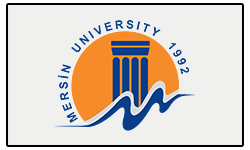Clinical Usefulness of Machine Learning Approaches as a Non-Invasive Technology in Reducing Hepatitis Disease Mortality
Abstract
Mohsen Ghorbian
Hepatitis is a viral infection that causes inflammation of the liver. However, other factors can cause the disease, including secondary effects from drugs, toxins, alcohol, and autoimmune hepatitis. The autoimmune form of the disease occurs when the body produces antibodies against the liver tissue, and many people worldwide are affected by it. Various clinical factors and parameters are examined in diagnosing hepatitis disease, which is analyzed by performing various tests of these factors and parameters. As a result of the vastness of the parameters under examination, it is challenging and complicated for the experts in this field to perform the analysis process on these parameters on a large scale. Healthcare experts can now identify the factors influencing the death rate of patients with high speed and accuracy thanks to emerging technologies such as machine learning, which is a subset of artificial intelligence. In this study, KNN and SVM machine learning techniques were used to analyze the positive effect of clinical parameters such as LIVER BIG, LIVER FIRM, SPLEEN PALPABLE, and ANOREXIA on patients' survival or death rates. This study investigates and analyzes the results of the implementation in two parts. The first part deals with determining the positive impact of these clinical parameters on the death and survival rate of patients, and the second part examines the performance of machine learning techniques based on the evaluation criteria of accuracy (ACC), error rate (ERR), specificity (SPE), and negative prediction value (NPV).Based on the implementation finding of machine learning techniques on data related to hepatitis patients, it has been determined that patients with positive LIVER BIG, LIVER FIRM, SPLEEN PALPABLE, and ANOREXIA clinical parameters can have a high chance of survival. On the other side, The SVM technique outperformed the KNN technique by ACC 94.05%, ERR 16.02%, SPE 93.07%, and NPV 85.7% in an analysis of the performance of machine learning techniques.



